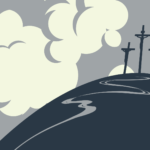Reviews: Truganini: Journey through the apocalypse by Cassandra Pybus, This Whispering in our Hearts Revisited by Henry Reynolds
Reconciliation Week reminds us of the hidden history of Indigenous Australia, something dealt with in these two books, important in their own ways, by Cassandra Pybus and Henry Reynolds respectively. Pybus tells the story of Truganini, the so-called last Tasmanian – not Cook or Bradman, but a notable Australian nonetheless – in the context of the tragedy of Aboriginal dispossession and death. Reynolds, as he does elsewhere, writes about these things, but he also writes about a minor part of the tragedy of theft, massacres and cover-up – the forgetting of acts of humanitarianism by courageous advocates for justice.
Truganini’s Nuennonne people lived in Tasmania’s south. She witnessed her mother murdered and her sisters kidnapped by sealers, and much more besides. She fell under the ‘care’ of George Augustus Robinson, controversial and idiosyncratic Chief Protector of Aborigines, who established a spectacularly unsuccessful mission on Bruny Island. She participated in Robinson’s also failed attempt to save Aborigines by relocating them to Flinders Island, and travelled to the newly established Melbourne, where she was caught up in a murder trial. In the later part of her life she lived in Hobart as something of a curiosity. After death she remained so – her skeleton was displayed in Tasmania and Melbourne until 1969.
Pybus tries to rescue Truganini from being the symbol of a dying race, but she remains something of a symbol for the suppression of Indigenous history. As Pybus says, it is hard to reconstruct a rounded psychological portrait of Truganini because most of the information about her comes from Robinson’s journals, and we get glimpses of her in the forest of Robinson’s self-importance. In fact, much of Pybus’s book could be titled ‘The Outrageous Adventures of George Augustus Robinson’. In an effort to help protect Tasmanian Aborigines he dragged his long-suffering companions, including Truganini, up and down the country, making contact with reluctant tribes, in order to ‘civilise’ them and remove them from the main island before the white settlers wiped them out, though nearly all died after the round-up anyway.
Pybus sees both Robinson’s faith and mission as follies, and his character as duplicitous, arrogant and bitter. But he did understand the tragedy that was unfolding, the injustice of dispossession, and his blundering attempts at salvation of Aborigines were driven by the knowledge that the majority of white settlers regarded the original inhabitants as vermin to be exterminated. (This is not hyperbole – settlers used this language.)

Robinson also features in This Whispering in our Hearts, and Reynolds is kinder, while still acknowledging Robinson’s many faults. Robinson, as with others such as John Gribble, an Anglican missionary in Western Australia hounded out of Western Australia for pointing out the immorality of perpetrators of violence and the indifference of most of the rest, could be meddlesome, rigid and humourless, but the faith of such people who feature in Reynolds’ book told them that all races were ‘one blood’. Their first-hand experience with Aborigines told them of Aborigines’ intelligence and relationship with country. Conversely, these humanitarians witnessed – outraged – frontier violence, slavery, theft, indiscriminate massacres of tribes.
I find it odd that the assertion that all these things occurred widely in Australia is controversial – there is much evidence from missionaries and government investigators. Many whites, including police, admitted to atrocities, happily so. As disturbing as the atrocities are the on-the-record justifications by whites for violence and outright hatred of Aboriginal people who many settlers thought, increasingly with the rise of Social Darwinist ideas, were the inevitable losers in the battle over land, and the sooner they were rid of, the better.
At the same time, Reynolds shows that there was recognition of Aborigines as traditional owners unfairly dispossessed. The departing and disenchanted Governor King told his successor Governor Bligh that Aborigines were the true owners of the land (and, by implication, the colonists, interlopers). The issue of compensation came up frequently, if ultimately to no avail, in the nineteenth century.
Reynolds says that although Australians are traditionally reticent about discussing moral issues, these discussions were there right at the beginning of Australian colonial history. Even as violence against Aboriginal people spread in some parts virtually unchecked, there were colonists who were deeply troubled by the fact. But they were perhaps in the minority. To read Reynold’s vital book is to be given hope that even in the face of dire opposition, there are those who stand against injustice. Yet it is also to be unsettled by the scope and veracity of the injustices, still under-acknowledged, that occurred.
Pybus’s ancestors lived on Bruny Island, and her book is partly an attempt to come to terms with the fact that Truganini’s dispossession paved the way for Pybus. But, as she points out, most white Australians live on land stolen from its original inhabitants (who, contrary to the stereotype, were deeply attached to their patches of country). Both Pybus and Reynolds show how much violence that dispossession involved. How do we deal with this? At the very least reconciliation should involve the cure of this extraordinary collective historical amnesia.
Nick Mattiske blogs on books at coburgreviewofbooks.wordpress.com
Illustrations: Portrait of Truganini as a young woman and A view of Sydney Cove, New South Wales, 1804, Victorian State Library











